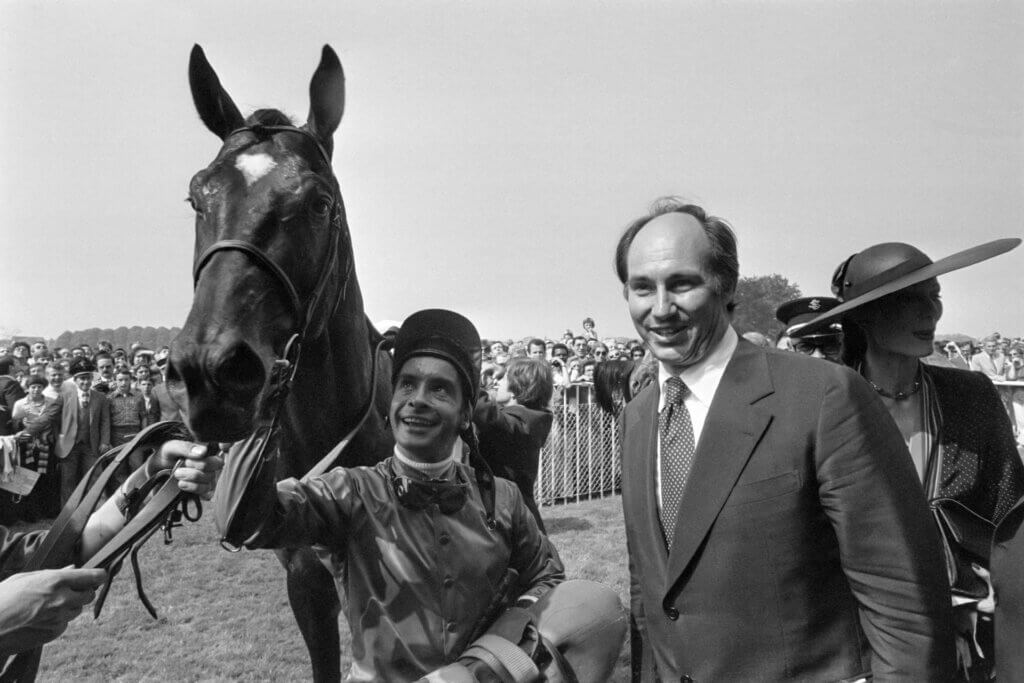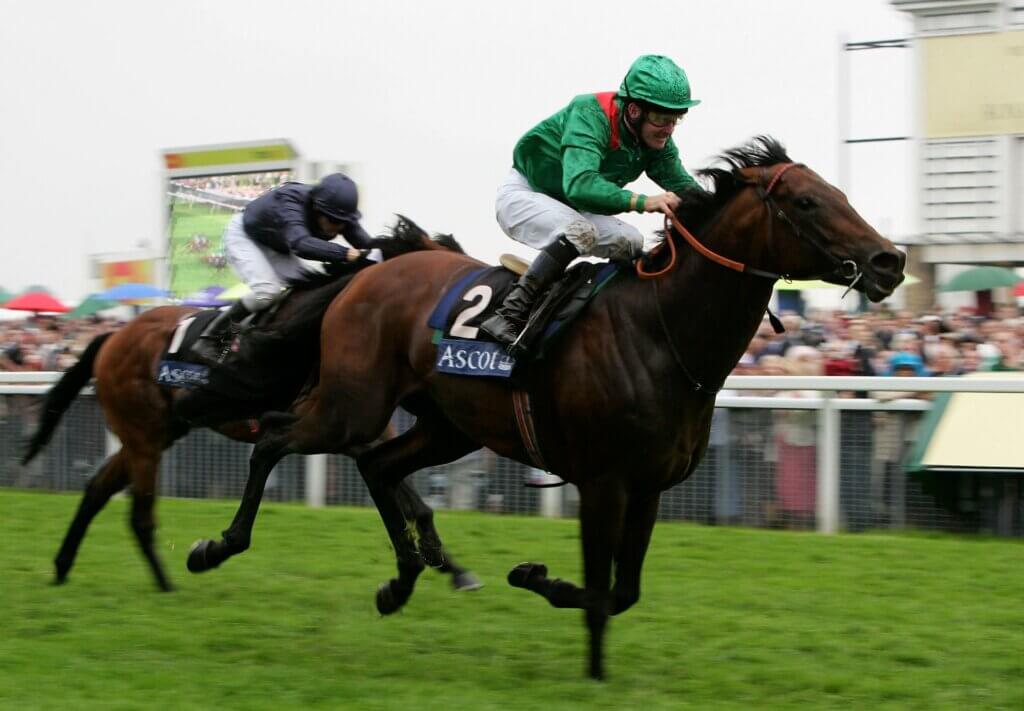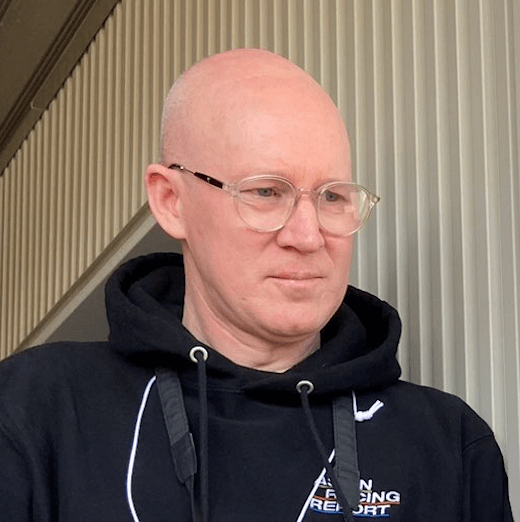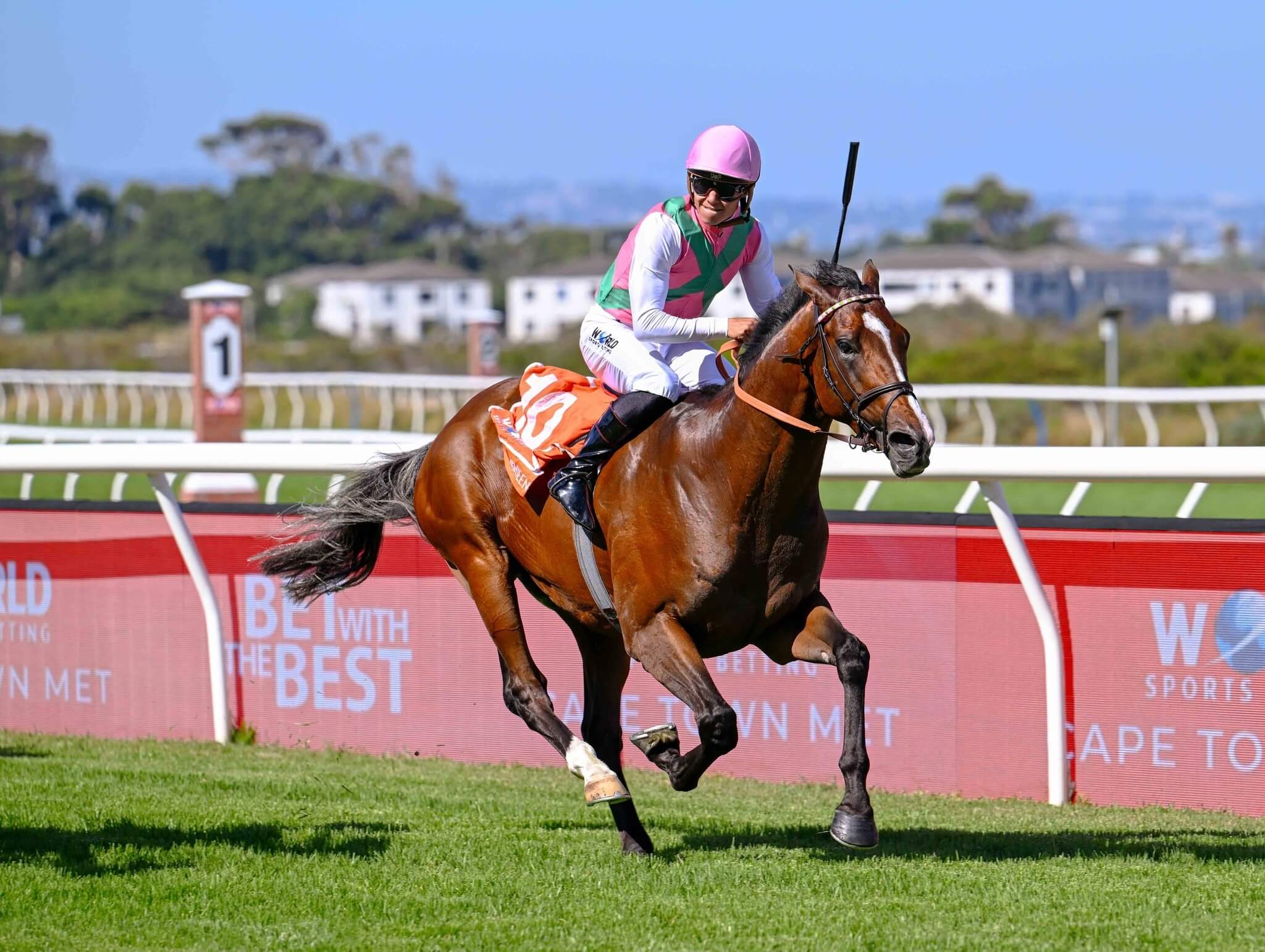Aga Khan’s “Charisma” And “Aura” Will Be Missed: Lemaire
One of racing’s biggest owners and a hugely influential breeder, the Aga Khan passed away in Lisbon at age 88 and has left a massive legacy.
HE WAS His Highness Prince Karim Al-Husseini, Aga Khan IV, the religious figurehead to some 20 million Shia Ismaili Muslims to whom he was also known as Mawlānā Hazar Imam, but to horse racing fans in the street, he was ‘The Aga Khan,’ the wealthy owner and breeder of champions, the man whose green silks with their distinctive red epaulets became iconic, the colours associated with the ill-fortuned folk legend Shergar and a host of other brilliant racehorses.
Some of the best to have carried those unmistakable colours besides the abducted and lost Shergar were Sinndar, Zarkava, Top Ville, Blushing Groom, Dalakhani, Darshaan, Shahrastani, Kahyasi, Shardari, Doyoun, Azamour, Kalanisi, Akiyda, Timarida, Daylami, Sendawar and Ashkalani. He also raced the great mare Petite Etoile, along with his father, and she carried the family’s old green and chocolate hoops.
The Aga Khan’s place in the popular consciousness of western Europe was captured by singer-songwriter Peter Sarstedt in his 1969 hit single Where do you go to (my lovely)? which featured the lyrics: “Your name, it is heard in high places, you know the Aga Khan. He sent you a racehorse for Christmas, and you keep it just for fun, for a laugh.”


A religious leader, billionaire businessman, and one-time Winter Olympian, the Aga Khan was also a philanthropist committed to improving the lives of millions of people in ‘the developing world’ through the Aga Khan Development Network (AKDN).
The Aga Khan passed away on February 4 in Lisbon, at age 88, with family at his bedside. He was born in Geneva, Switzerland in 1936 and became the 49th hereditary Nizari Ismaili imam in 1957, at age 20, upon the death of his grandfather, Sir Sultan Mahomed Shah, Aga Khan III. When the title and responsibilities that came with it passed to him rather than his father, Prince Aly Khan, it was only the second time in 1300 years that it had skipped a generation.
His grandfather was a renowned owner and breeder who won the Epsom Derby with Blenheim, Bahram, Mahmoud, My Love and Tulyar, and who also raced the brilliant sprinter and important broodmare Mumtaz Mahal: he established the immensely influential breeding empire that his grandson would nurture and enhance.
His father was a socialite, an amateur jockey and owner with a deep understanding of form and pedigrees. Prince Aly was at one time married to the actress Rita Hayworth, and died in a Paris car crash in 1960 at age 48.
His mother was Princess Taj-ud-dawlah Aga Khan, born Joan Yarde-Buller, daughter of the third Baron Churston and later, through her third marriage, known as Viscountess Camrose. Prince Karim’s world was a merging of old money European aristocracy and South Asian royalty and religion, and his unique status had him well-placed to work through the complex politics affecting Nizari Ismaili people.
As a breeder and owner of Thoroughbreds, the influence of the bloodlines he merged and evolved is perhaps unsurpassed by any other owner-breeder of the last 60 years.
“The Prince was one of the best owners who ever lived and his passing is a big loss for horse racing in general,” said Christophe Lemaire when speaking with Idol Horse. Japan’s champion jockey, Lemaire was the Aga Khan’s contracted rider from 2009 through 2013.
“His breeding farms and his ownership, his whole operation was one of the most important in the industry, and, as for himself, in the context of the industry, he was like a living ‘god’ in horse racing and his aura and his charisma were very important for the whole industry.”

The Aga Khan took on the family’s racing and breeding operation upon his father’s death and continued to develop it into an empire. In the 65 years since, his silks were carried to success in 160 Group 1 races, he was champion owner 20 times and champion breeder 15 times in the countries he raced his horses; he won the Prix de l’Arc de Triomphe four times, the Derby five times, the Irish Derby six times, and the Prix du Jockey Club eight times; his Lashkari won the inaugural Breeders’ Cup Turf in 1984, and he won major races in Hong Kong and Dubai, too.
His breeding operation was a twin affair, based in Ireland (Gilltown Stud, Sheshoon Stud, Sallymount and Ballyfair) and France (Haras de Bonneval, Saint-Crespin, Haras d‘Ouilly and Haras de Tupot). The Aga Khan enhanced his own stock’s bloodlines when he purchased the breeding stock of fellow legendary breeders François Dupré, Marcel Boussac, Lionel and Brook Holliday, and Jean-Luc Lagardère.
If there is to be a criticism of his policies as an owner-breeder it is that he rarely raced his top colts beyond their three-year-old season, thus denying the opportunity for those colts to cement their legacies as outstanding champions. Daylami’s global triumphs, having joined Godolphin after his classic campaign, offered a tantalising glimpse of what the sport might have been missing. But his strategy worked for his method of running the breeding arm as a viable business.
He was a man of principle, too, and stood firmly behind his trainers in three famous instances: François Mathet when Vayrann failed a dope test following his 1981 Champion Stakes win but was subsequently exonerated; Alain de Royer-Dupré after Lashkari returned what was proven to have been a false positive at the 1985 Breeders’ Cup; Michael Stoute after Aliysa was disqualified from the Oaks at Epsom, a controversy that led the owner to remove his horses from Britain for four years.
And on the flip side, he took away his horses from Luca Cumani after two of his horses under the trainer returned positive dope tests. When it came to jockeys, he twice terminated the contract of star jockey Christophe Soumillon, firstly for the jockey’s alleged disrespectful comments about Andre Fabre, at least in part, and secondly for his violent elbowing of fellow jockey Rossa Ryan to the ground mid-race.
The Aga Khan utilised the skills of some of the best jockeys of his age: Yves Saint-Martin, George Moore, Lester Piggott, Walter Swinburn, Gérald Mossé, Mick Kinane, Johnny Murtagh, Pat Smullen, Soumillon, and Lemaire included.


“For me to be his retained jockey and to wear the green and red colours was a rare privilege,” said Lemaire, whose most prestigious win for the Aga Khan came in the 2010 Prix de Diane on Sarafina. “I was very proud to be one of his jockeys because every victory had a special taste, especially in the Group 1 races when His Highness was in the winners’ circle, it was quite special.
“His stature and his charisma, his aura, it was very impressive to be in front of him having a discussion with him: he always had the words to make you comfortable, and in that way he was friendly when you had a conversation with him, but with all the respect he deserved.
“But he was always listening to the people and looked like he always had something to learn from others; even with his great experience he was always listening to his jockey afterwards. Of course, he did his own analysis and took his own decisions, but he was really somebody nice to work with and even every meeting with him was special; it was always a great time, so today I feel very sad because we have lost someone who is a legend of horse racing.”
Lemaire’s sentiment is shared across the horse racing world and beyond ∎





